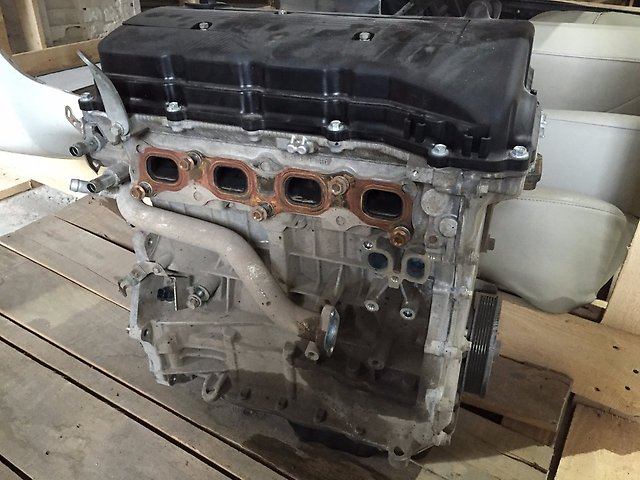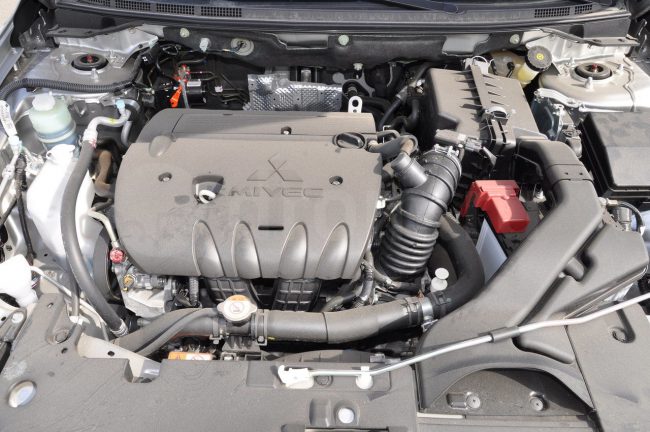
Mitsubishi 4B10 engine
Content
All over the world, the name "World Motor" has been assigned to the power units of the 4B10, 4B11 series. Despite the fact that they are made for installation on Japanese Mitsubishi Lancer cars, their popularity and demand reaches the American continent, but already under the G4KD marking.
Structurally, the motor blocks are cast from solid aluminum, a cast-iron sleeve is pressed inside (4 in total). The basis for production was the Global Engine Manufacturing Alliance (GEMA) platform. It was successfully created by the joint efforts of the three companies Chrysler, Mitsubishi Motors, Hyundai Motor.
Both series of internal combustion engines contain four valves per cylinder, two camshafts, MIVEC electronic gas distribution system. Control is carried out not only on the intake stroke, but also on the exhaust.
Specifications, brand, location
- manufacturer: Mitsubishi Motors Corporation, if we are talking about installation on a Japanese brand. In all other cases, the marking is applied in accordance with the country of manufacture, for example, Slovakia, USA;
- series: 4B10, 4B11 or G4KD engine for third-party concerns;
- production period 2006;
- block base: aluminum;
- type of power system: injector;
- in-line arrangement of four cylinders;
- piston stroke reserve: 8.6 cm;
- cylinder diameter: 8.6 cm;
- compression ratio: 10.5;
- volume 1.8 liters (2.0 for 4B11);
- power indicator: 165 hp at 6500 rpm;
- torque: 197Nm at 4850 rpm;
- fuel grade: AI-95;
- Euro-4 standards;
- engine weight: 151 kg in full gear;
- fuel consumption: 5.7 liters in the combined cycle, suburban highway 7.1 liters, in the city 9.2 liters;
- consumption (oil consumption): up to 1.0 l / 1 thousand km, with wear of the piston group, operation in difficult conditions, special climatic environment;
- frequency of scheduled technical inspection: every 15000 km;
- tuning power indicator: 200 hp;
- injection type: electronic;
- repair liners: step size 0,025, catalog number 1115A149 (black), 1052A536 (color less).
- type of ignition system: electronically controlled ignition timing on four coils.
The combustion chamber is of a single-slope type and the central arrangement of candles. The valves are located at a slight inclination in relation to the cylinder head and the chamber cavity, which makes it possible to give it a compact form. Inlet and outlet channels are located crosswise. The valve seats are made of a special durable cermet alloy. The same valve guides are used on the intake and exhaust valves. Selection of consumables and repairs now do not take much time.
Inserts and five bearings are installed in the main journals of the crankshaft. Joint No. 3 takes the entire load from the crankshaft.
The cooling system (jacket) of a special design - without an intermediate duct. The coolant does not circulate between the cylinders, only around the perimeter. An oil nozzle is used to systematically lubricate the timing chain.
All pistons (TEIKIN) are cast aluminum alloy. This is to reduce the weight of the structure, but the recesses on the surface of the pistons are increased. The material for the manufacture of connecting rods was forged high-hard steel. The crankshaft is forged, the design has five bearings (TAIHO) and 8 counterweights. The necks are located at an equal distance from each other at an angle of 180°. The crankshaft pulley is cast iron. On the surface there is a special channel for the V-belt of the drive mechanisms.
Motor reliability
The power units of the 4B1 series, which includes 4B10 and 4B12, are considered one of the most reliable and proven "for years". It is not for nothing that they are installed on a number of European and American brands.
The average service life of the engine is 300 km. Subject to the basic rules and recommendations, the figure exceeds the mark of 000 km. Moreover, such facts are not isolated.
It was possible to significantly increase the reliability of the power unit after the unsuccessful release of a 1.5-liter engine. Perhaps, if not for the "one and a half", the fate of the engines of the 4B10 and 4B12 series is unknown.
The following changes have been made: intake receiver, DMRV, connecting rod mechanism, gas distribution system, phase shifters, a new type of firmware has been installed in the electronic engine control unit. Models that go on sale in the CIS countries are specially “strangled” in terms of power to around 150 hp. This is explained by the amount of tax payments in excess of the limit.
One more feature. Despite the consumption of AI-95 fuel, the engine copes well with AI-92. True, after the first or next 100 km, a knock begins, valve adjustment is needed, since there are no hydraulic lifters.
Typical malfunctions of motors of the 4B10 line
- slight whistle from the compressor roller bearing. The problem is eliminated by a banal replacement with a new one;
- chirring: a characteristic feature of the power units of this line. Many car owners start to get nervous about this, it's okay, it's a workflow;
- after 80 km of run, vibration of the motor at low speeds, not exceeding 000 - 1000 rpm, is characteristic. Worn spark plugs, damaged electrical wiring. It is eliminated by replacing the elements of the ignition system, checking the cables for integrity with a multimeter. The ignition system error is systematically displayed on the center console of the instruments;
- the crankshaft sensor fails prematurely;
- hissing sounds in the area of \uXNUMXb\uXNUMXbthe fuel pump. Normal operation of the engine, which should be used to.
Despite some minor problems, the power unit has proven itself on the positive side. High-torque, economical, unpretentious, numerous reviews of car owners confirm the above.
Few people know that a 4-liter engine was created on the basis of the 10B2.0 specifically for sports cars such as the Mitsubishi Lancer Evolution and Mitsubishi Lancer Ralliart. The features are impressive. Once again you are convinced of the "strength" of the engine.
Maintainability
The presence of free space inside the engine compartment facilitates many types of repair work without resorting to the help of a lifting mechanism, an inspection hole. Enough capacity of a hydraulic jack.
Thanks to free access to many nodes in the engine compartment, the master replaces worn parts with new ones without difficulty and additional dismantling. Not all European car brands can boast of this. Prompt access to the service station, quick replacement of parts - major repairs are prevented.
Timing marks
The gas distribution mechanism is based on two camshafts. They are driven by a metal chain through sprockets. The operation of the chain is silent due to the design features. Only 180 links. The chain runs along the surface of each of the crankshaft VVT stars. The timing chain has three connecting plates with pre-set orange markings. It is they who serve as signaling devices for the position of the stars. Each VVT star is 54 teeth, crankshaft is 27 stars.
The chain tension in the system is provided by a hydraulic tensioner. It consists of a piston, clamping spring, housing. The piston presses on the shoe, thereby providing automatic tension adjustment.


Watch this video on YouTube
Type of oil to fill in the power unit
The manufacturer recommends filling the Mitsubishi 1.8 engine with oil with a class of at least semi-synthetics: 10W - 20, 10W-30. The volume is 4.1 liters. In order to extend the life of the motor, conscious car owners fill in synthetics, class: 5W-30, 5W-20. Oil change is carried out at intervals of 15000 km. When operating a technical tool in special conditions, the threshold is reduced by a third.
It is not recommended to pour mineral-based engine oil into a high-revving engine.
List of vehicles with pre-installed 4B10 series engines
- Kia lineup: Cerato, Optima, Sportage;
- Hyundai: Elantra, ix35, Sonata;
- Mitsubishi: Lancer 10, Outlander, ASX / RVR;
- Peugeot;
- Citroen;
- Chrysler Sebring;
- Dodge Avenger, Caliber;
- Jeep: Compass, Patriot.

